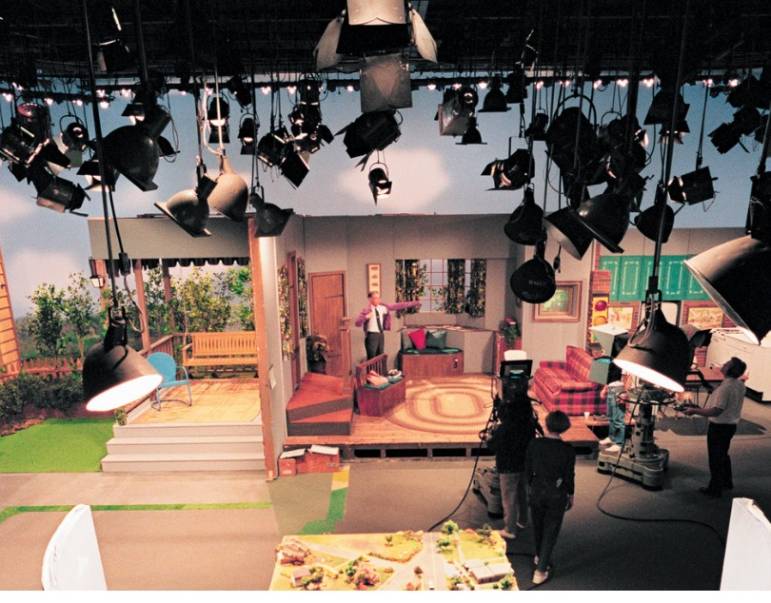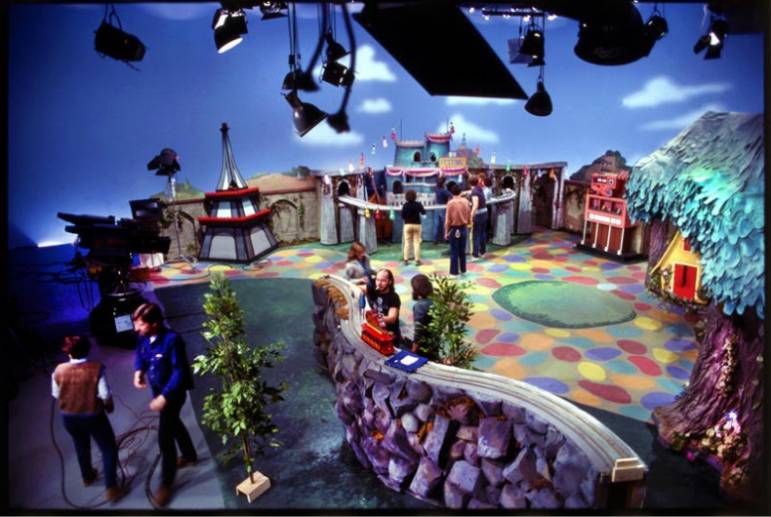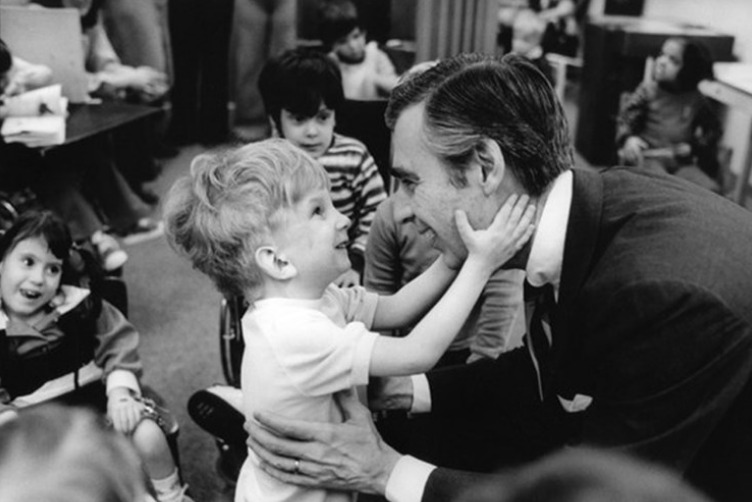“I think everybody longs to be loved and longs to know that he or she is lovable and consequently the greatest thing that we can do is to help somebody know that they are loved and capable of loving.”
– Fred Rogers


What happens when we listen to that still small voice, when we follow our inner knowing, staying the course, acknowledging the signs and trusting in an invisible reality? What happens when we move forward with unconventional ideas not easily supported by the masses, that are innovative and revolutionary? Hopefully, if we are fortunate, we can effectively change the world that surrounds us for the better. Fred Rogers influenced an entire generation through the one emotion that – in these times – seems rarely used, yet which affects us all to our very core.
Love.
As a child, expressing proper vocabulary escapes us, consequently, we as children did something that, as adults, is replaced with logic. We used our feelings.
Mr. Rogers Neighborhood was a part of my formative years, and I contemplated writing an article about his legacy for some time. With the Tom Hanks film “A Beautiful Day in the Neighborhood” opening this month, coupled with stumbling across the Fred Rogers documentary, Won’t You Be My Neighbor, I knew that was my sign. A sibling who saw the film before me offered sound advice: “Make sure you have a box of tissues.”
Armed and ready to keep a stiff upper lip, when the familiar tinkle of the piano opened the film, immediately I became affectionately misty-eyed. Without explanation, an avalanche of unexpected emotion followed. It happened so quickly that there was no time to process why. I expected to be nostalgically sentimental, but I did not expect this. Perhaps it was the familiar reminiscing between the notes of the keys or maybe it was an even truer glimpse of Fred Roger’s passion within his words explaining his then profound idea to utilize the media for the benefit of what he felt was his mission-to guide children through the modulations of life.
“The outside world of children have changed, but the inside hasn’t” – Fred Rogers

Once I was able to sift through my emotions, I uncovered the root cause. I didn’t realize until that very moment just how much Fred Rogers meant. How embedded his words were when he looked at me and every other child through the television set, the vulnerability he made me feel safe with, and the joy of visiting an old friend I haven’t seen in a long time, at once just within a few key changes of the piano, all came flooding in.
Mr. Rogers was present. He was sincere and compassionate. He gave undivided attention and shared love, filling a void for a latch-key generation. He was inclusive, hosting an array of diversified guests on his television show. He shed light on the inevitable issues of divorce, racism, and death, thinly disguising his lessons, in easily digestible forms, for a younger audience. He touched lives, on a daily basis, teaching us that our value is implicitly fundamental.

“We need to make our children more aware that what is essential in life is invisible to the eye” – Fred Rogers
Once serenaded with “Won’t You Be My Neighbor” by the passengers on a crowded New York City subway, Rogers, was loved by children of varying nationalities and class. His even-keeled demeanor, soothing style of speech, and sincere emotion not only deeply affected children but also brought the inner child out of adults. His vehicle to connect to both was a crude hand puppet, Rogers’ alter ego, Daniel the Striped Tiger. Daniel’s eyes do not move, neither does his mouth and yet there is sudden connection. Even though we are literally watching Rogers operate a puppet, he enters the heart, effortlessly bypassing blockages, speaking to the child’s greater being, and to the adult’s inner-child.

“The space between the TV and whoever happens to be receiving it, I consider that very holy ground.” -Fred Rogers
One scene in particular that holds a lasting impression is that of Jeff Erlanger, who inspired Tom Hanks to take on the role in the upcoming film, “A Beautiful Day in the Neighborhood.” I remembered this meeting from watching the show as a child. Erlanger, a quadriplegic, I felt (and still feel) was heroic. There was a short, yet poignant exchange between Erlanger and Rogers. Erlanger accompanied Rogers in a rendition of “It’s You I Like.” Years later when Rogers was inducted into the TV Hall of fame, Erlanger appeared on stage. Instead of holding gratitude in his seat, a surprised and elated Rogers stood up, unsteadily and unassisted climbed up on stage and embraced Erlanger, then bent to one knee and spoke to Erlanger with genuine sincerity as if the auditorium were empty.
Jeff Erlanger and Fred Rogers
By all present-day accounts, this really is who Fred Rogers was, and in a world full of disappointment, where it is difficult to find the faithful, we come face to face with the improbable reality of believing in someone, whose faith did not waver in us, who understood us, who we could depend on to see past the superficial everyday standards that we are judged by and judge ourselves by on a moment-by-moment basis. Whose sincerity and genuineness shone through because it was not afraid of being hidden. The authentic kindness in him calls on the authentic kindness within ourselves, something that especially in these times, we need to be acutely aware of, and that just may be what moves us to emotion for those of us familiar with Rogers’ work.
Parents and kids react to Won’t You Be My Neighbor
What would Fred Rogers think of our world today? One of the most profound aspects of this documentary are the many parallels from decades ago that we are experiencing and witnessing in present day. In 1968, during the first weeks airing of Mr. Rogers Neighborhood, in the land of make-believe, King Friday ordered a wall to be constructed. Rogers reads the bolded headlines of a newspaper to the camera:
King Friday XIII Establishes Border Guard. King Against Change
King Friday: “Down with the changers…’cuz we’re on top!”
Wanting peace, the inhabitants of make-believe send balloons attaching messages of “love,” “peaceful co-existence,” and “tenderness” to King Friday. So…what would Fred Rogers think?

What do you think, Rogers would think?
This documentary is truly a powerful experience. If you are a Mr. Rogers fan, prepare to run the gamut of emotions, as this film will move you. Block out uninterrupted time, curl up on the couch and do not forget the tissues, you will surely need them.
Love is at the root of everything. All learning all parenting, all relationships. Love or the lack of it. -Fred Rogers
Have you seen “Won’t You Be My Neighbor?” Share your thoughts below.

Constance Cherise is a classic film aficionado. Reach her at constance.cherise@gmail.com







